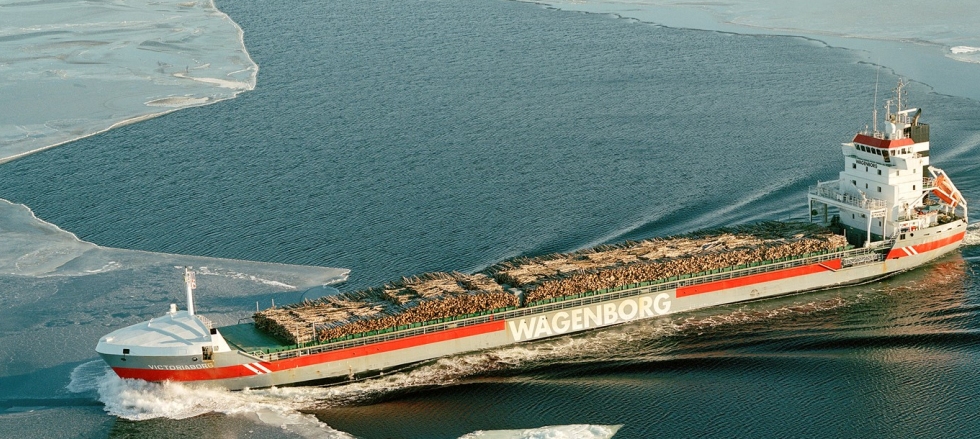|

Insights on the Global Lumber Markets thru the First Three Quarters 2020
Jan. 20, 2021 - The following synopsis on global lumber trade is produced by Wood Resources International.
Lumber Markets - Europe
Lumber trade fell slightly in Europe in 2020. During the first eight months, shipments from the major exporting countries were down 1.2% — the first y-o-y decline in eight years, as reported in the Wood Resource Quarterly (WRQ) published by Wood Resources International. Countries that have reduced exports the most so far this year include Finland, Latvia, and Austria.
There have been mixed developments in the Nordic countries, with Finland shipping substantially less lumber this year, while Sweden actually increased shipments. Sweden is on track to reach an all-time high in export sales this year. The markets where Swedish exporters have expanded the most since 2019 include the US, China, Germany, Denmark, and Egypt.
Lumber prices in Finland and Sweden have moved up during much of 2020, as reported in the WRQ. The increases followed a low point in late 2019 when prices were at their lowest in over ten years (in US dollar terms).
Lumber Markets - North America
The US lumber market was red hot in the 3Q/20, with prices surging to levels never seen before. Southern pine prices increased by 160% from the year’s low in April, to September. In Western US, Douglas-fir lumber prices almost doubled during the same period.
High domestic demand for lumber in the US and a trade dispute with China reduced US softwood exports in 2019 and 2020, with y-o-y reductions of 17% recorded in the first nine months of 2020. Total shipments for 2020 are on track to be their lowest in over ten years.
Canadian lumber exports have also declined in 2020. During the first nine months of the year, shipments were 10% lower than in the same period in 2019, with most of the decline occurring from January to June. In the 3Q/20, total export sales picked up from the previous two quarters, equaling the 3Q/19 shipment volume.
The price surge in the US domestic market directly impacted Canadian export prices in 2020. Average prices for US-bound lumber in September 2020 were 94% higher than in September 2019.
Lumber Markets – the United Kingdom
The United Kingdom is the largest importer and the second-largest consumer of softwood lumber in Europe. In 2019, the country imported 6.7 million m3, which was a y-o-y decline for the second consecutive year. Although lumber imports showed a substantial increase in the 3Q this year, the first nine months’ total volume was still 22% below the same period in 2019.
Shipments from Sweden, the largest lumber supplier to the UK, have fallen less than imports from other countries, including Latvia, Finland, Russia, and Germany. Import prices were generally higher in the fall than earlier in the year.
Lumber Markets - China
Lumber imports to China slowed in the 3Q/20, with total volumes falling 2% from the previous quarter and 4% from the 3Q/19. Total imports for the first nine months were 10% below the same period in 2019, according to the Wood Resource Quarterly. China’s two largest supplying countries, Russia and Canada, collectively account for roughly two-thirds of total imported softwood lumber. They both lost market share in 2020. Predominantly European suppliers, including Ukraine, Sweden, Germany, Finland, and Belarus, have been increasing their presence in China to fill the need for wood in the world’s second largest market this year.
Despite the reduced demand for lumber, import prices have moved up this year and in the third quarter were the highest they have been in two years. Russian prices were close to a record high. Russian lumber is also the supply source that has increased the most in price the past year.
Lumber Markets – Japan
Lumber imports to Japan fell by almost 10% during the first nine months of 2020 compared to the same period in 2019. The y-o-y changes were mixed for the four leading suppliers, with Canada, Finland, and Russia reducing shipments to Japan, while Sweden increased export volumes by 19% this year. Importation from smaller suppliers such as Austria, Chile, the United States, the Czech Republic, and Germany have fallen by 10-35% in 2020.
Import prices have slowly trended downward the past two years, with the average price in the 3Q/20 being 13% lower than in the 3Q/18. According to the Japan Lumber Journal, the most significant changes from September 2019 to September 2020 were an increase of Canadian hemlock prices by 15% (in Yen terms) and the decrease in European whitewood prices by about 13%.
The Wood Resource Quarterly (WRQ) is a 70-page report established in 1988 and has subscribers in over 30 countries. The report tracks prices for sawlog, pulpwood, lumber, and pellets and reports on trade and wood market developments in most key regions worldwide. For more insights on the latest international forest product market trends, visit: www.WoodPrices.com.
SOURCE: Wood Resources International LLC |